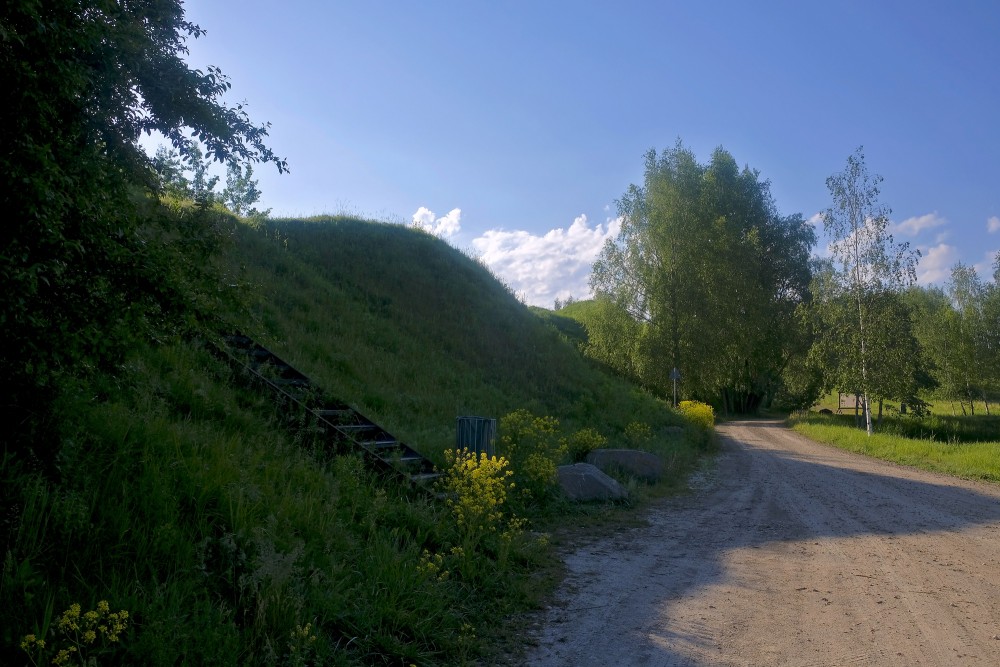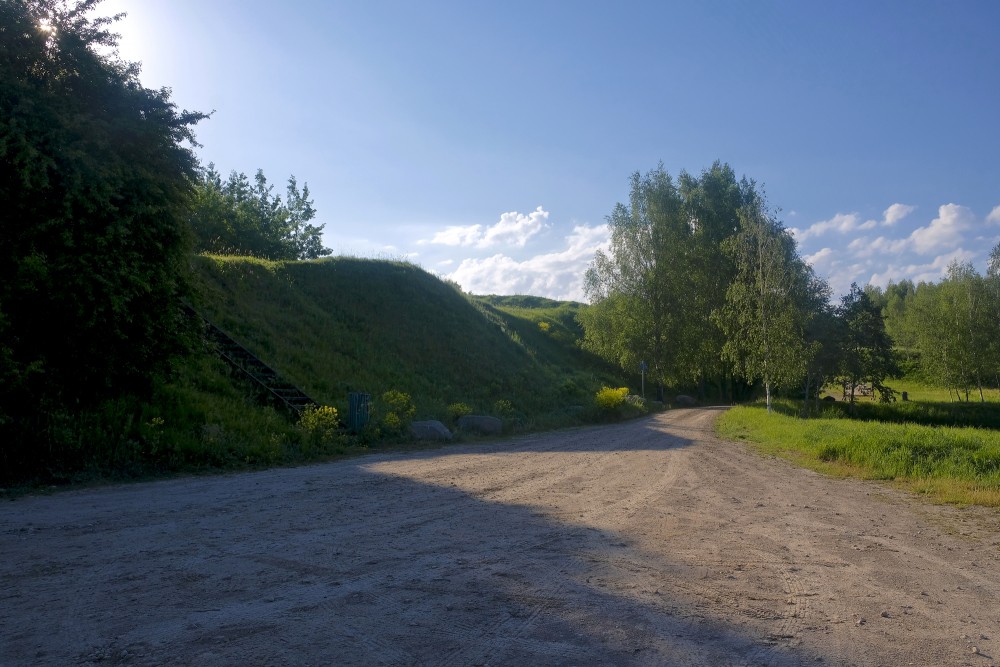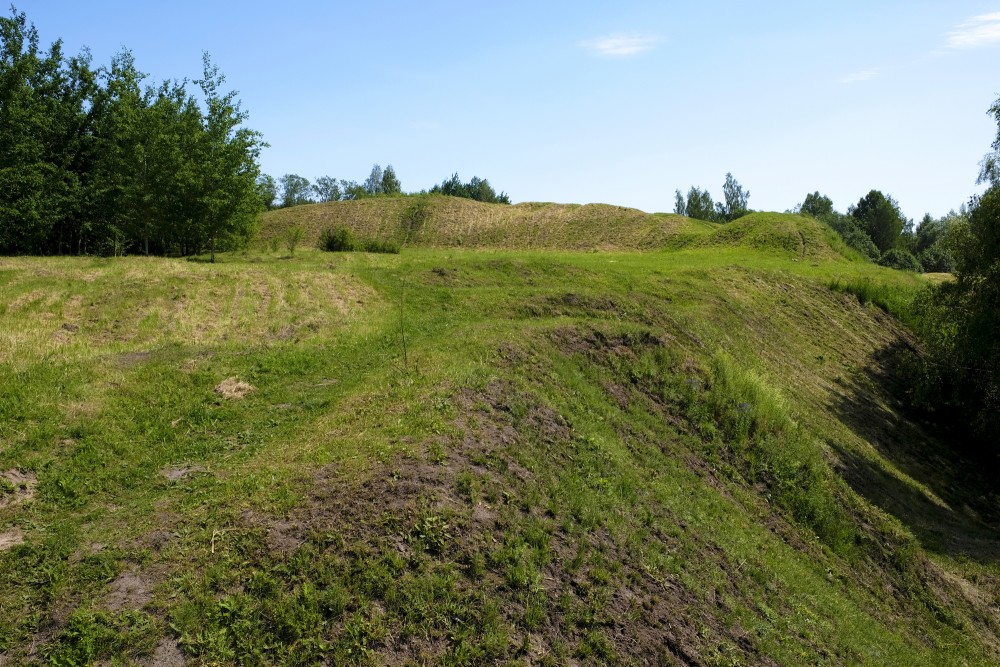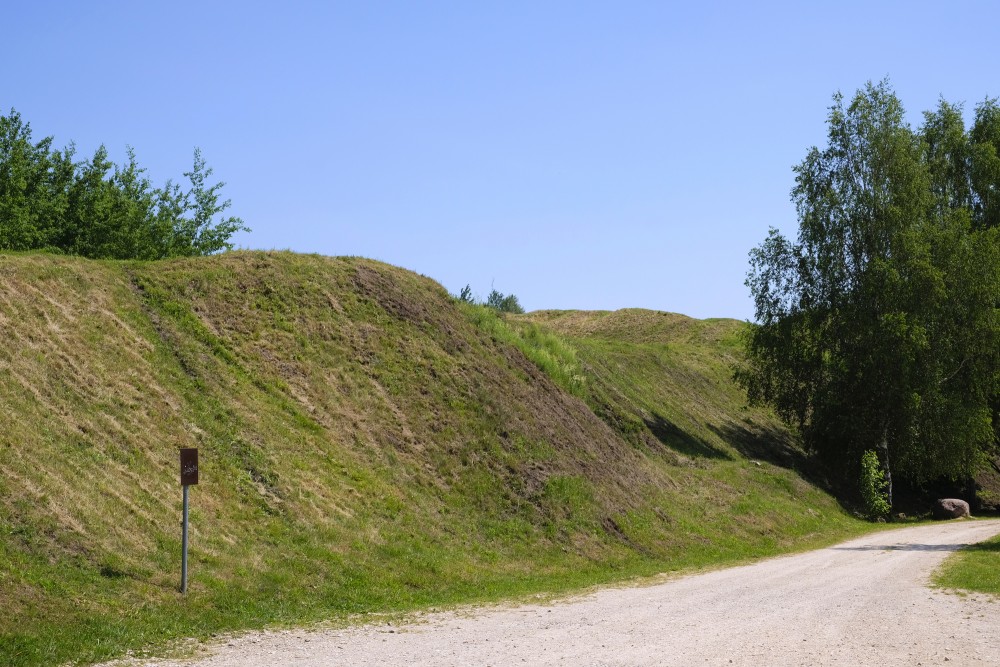Daugmale hillfort
Daugmale hillfort is an ancient centre of trade and craft on the left bank of the Daugava river near the Tīči and Pukstiņi homesteads. Several authors believe that a port referred to in historical documents as Portus Semigalliae, was located at the foot of the hill where the river Varžupīte flows into the Daugava. Archaeologists have found evidence that the hillfort has burned at least 14 times during its existence. The first humans settled here at the end of the 2nd millennium BCE. Daugmale flourished during the 10th to 12th centuries, when it was the main downriver port on the trade route from the Varangians to the Greeks. It was inhabited by Semigallians, Livonians, Latgallians, Krivichi, and Varangians.
Daugmale hillfort with its settlement, port, and burial ground is one of the most remarkable and famous archaeological monuments in Latvia. The ancient site complex consists of a 3800 m2 hillfort and a 2-hectare ancient settlement. The main part of the settlement is located to the east of the rampart. The second, smaller part formed between the western slope of the hill and the Varžupīte river.
Archaeological excavations on the hillfort have been directed by Valdemārs Ģinters (1933, 1935-1937), Vladislavs Urtāns (1966-1970), Arnis Radiņš and Guntis Zemītis (1986-1992). The excavations unearthed dwellings and outbuildings with stone and metal ovens, a mill, a pottery kiln, jewellery workshops, an iron furnace, a well, remains of fortifications, and the gate of the settlement. Approximately 20,000 artefacts have been found during the excavations of the hillfort and the settlement. The number of coiled and wheel-thrown pottery sherd finds exceeds 200,000.
The hillfort was inhabited from the 2nd millennium BCE until the 13th century. Semigallians resided here prior to the 10th century, but from the 10th to the 13th century its inhabitants were Livonians and Latgallians. Finds from the hillfort indicate trade connections with Rus, Scandinavia, Western Europe, Byzantium, Hungary, and Arab countries. The hillfort was surrounded by a defensive earthwork, with a settlement and a burial ground nearby. Supposedly, this place was named the Semigallian Port due to its position at the end of the important land route from the Semigallian centre Mežotne castle, continuing across the river to Salaspils.
In 1937, the archaeologist Valdemārs Ģinters discovered a unique artefact here, a fragment of a stone object (interpreted as a head of a sceptre or a mace, or possibly a loom weight), carved with Scandinavian runes. The object is made of limestone, which according to material analysis was sourced locally on the banks of the Daugava. The artefact was most likely created in Daugmale in the 11th century. The inscription reads “: runar : þesar : o” which translates as “… these runes in …”. The richest assemblage of imported objects of this time in the East Baltic comes from the Daugmale hillfort (Мугуревич 1965, 103). Finds indicate trade contact with Germans in the second half of the 12th century, for example, a circular bone pendant with an image of a deer similar to one found in excavations in Magdeburg, Germany.
www.latvian-hillforts.lv



